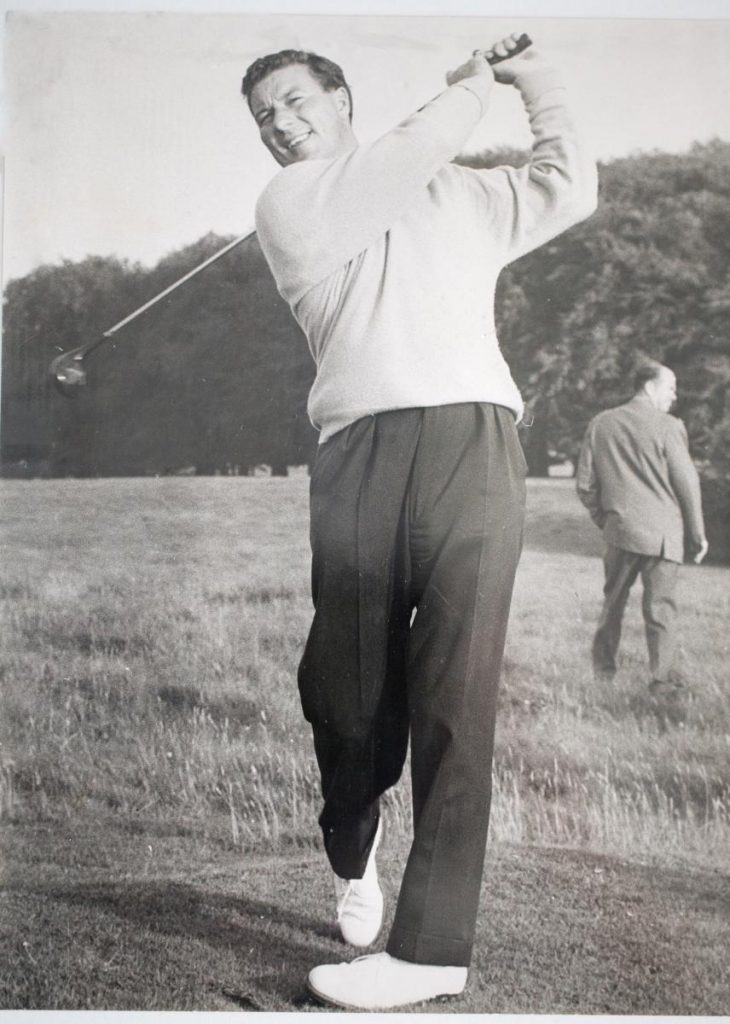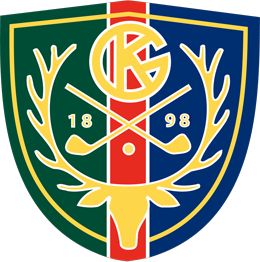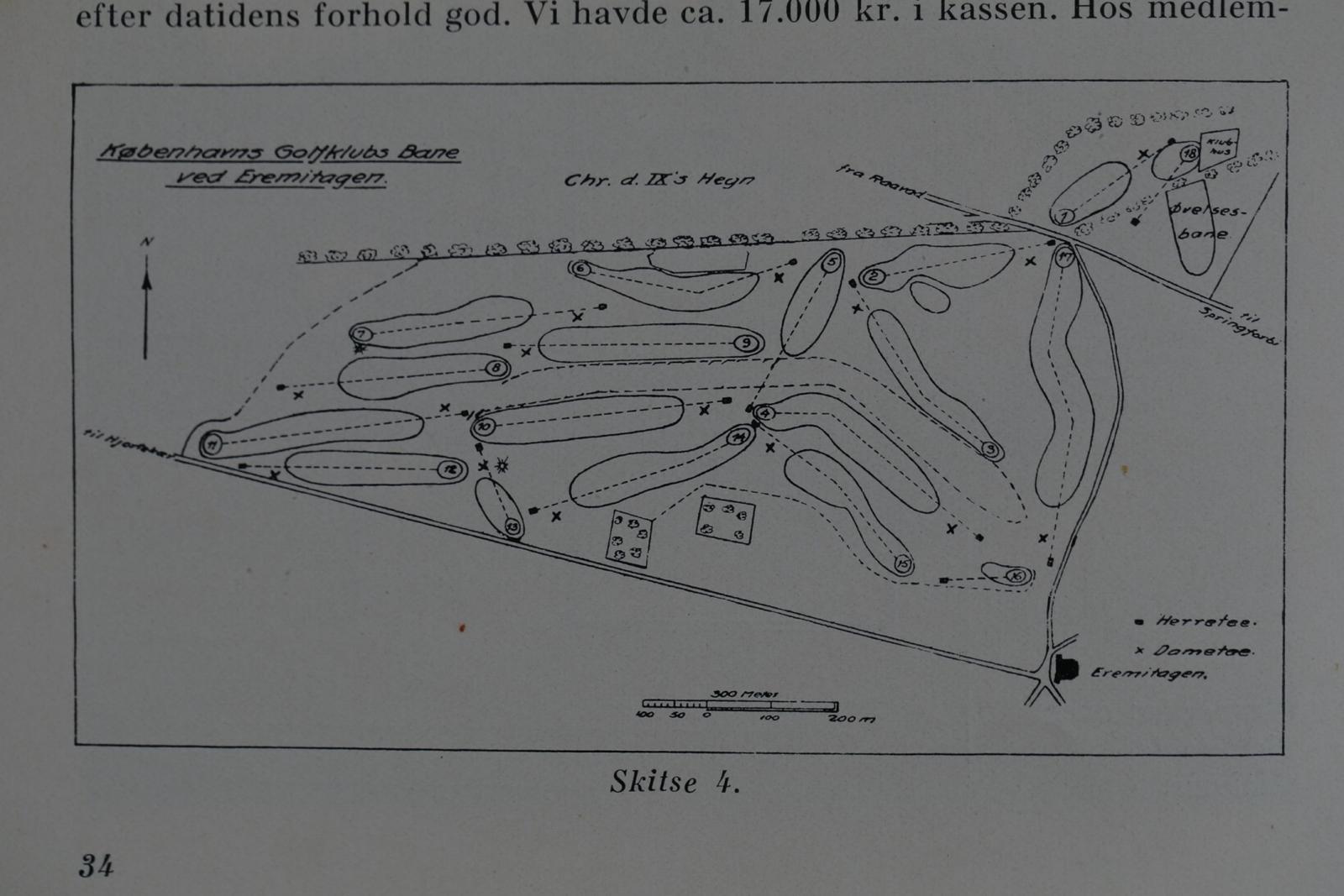Scandinavia's first golf club
We are Scandinavia's first golf club.
We are Scandinavia's first golf club located on the unique and historic Eremitageslette. Member or guest, the course is an experience for everyone, gives greater golfing pleasure and keeps you in better shape, because in Dyrehaven we can play all year round. Although close to the city, yet free from noise in the protected area. Enjoy the view from the terrace over the Eremitage and experience golf history in Scandinavia's first golf club, together with family and friends.
The course is designed for a wide range of handicaps, with strategic play as important as aesthetics. It will challenge you at whatever level your golf game is at, while also providing a fantastic natural experience in all seasons.
The encounter with the game of golf can become a lifelong love, balm for the soul, give you good health and expand your social network, because everyone can play against everyone. Golf can be played throughout life, there is a pleasant atmosphere in the club, and friendships are created when you enjoy yourself on the 19th hole terrace after playing and training.
It's fun to start and with the help you receive from members, coaches and secretariat you'll quickly be well underway.
For new members, KGK creates joy and networking. You feel welcome from Day 1, surrounded by kindness and happy people.
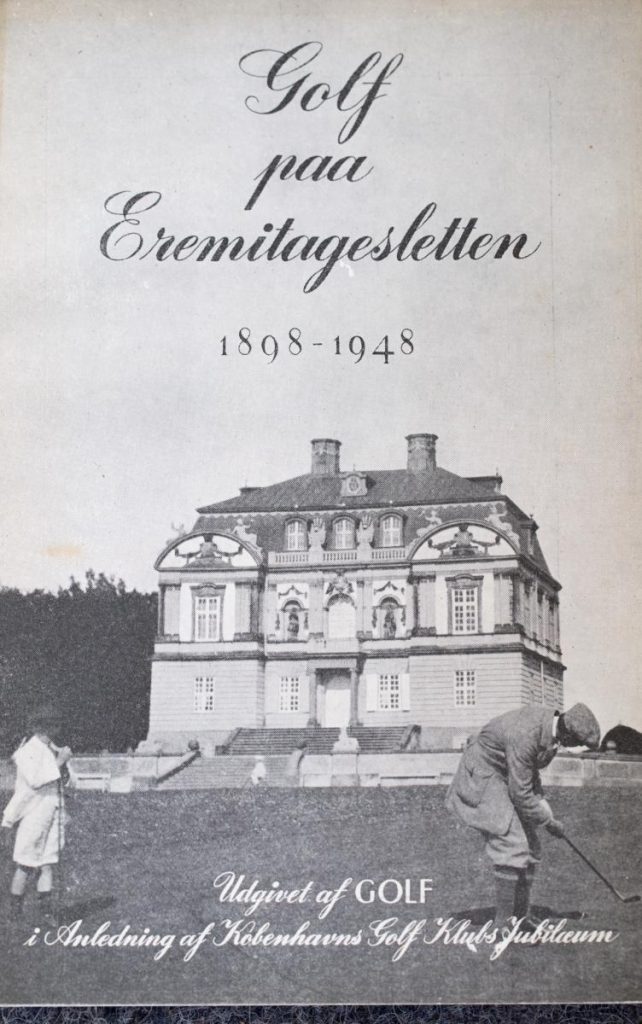
GOLF IS BORN IN DENMARK
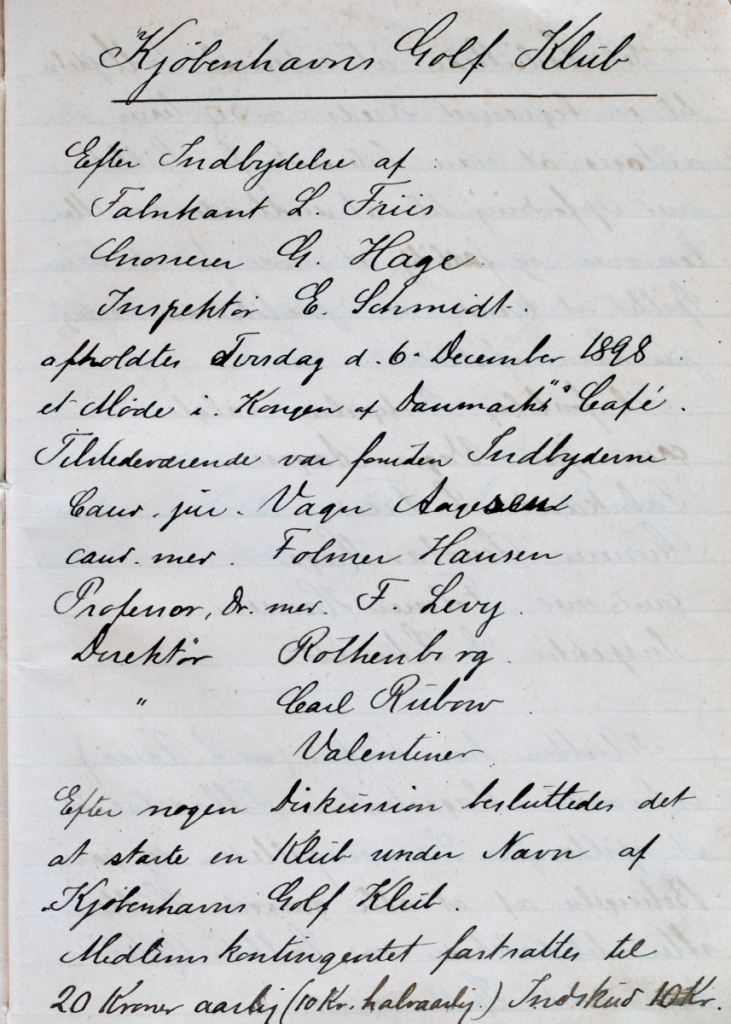
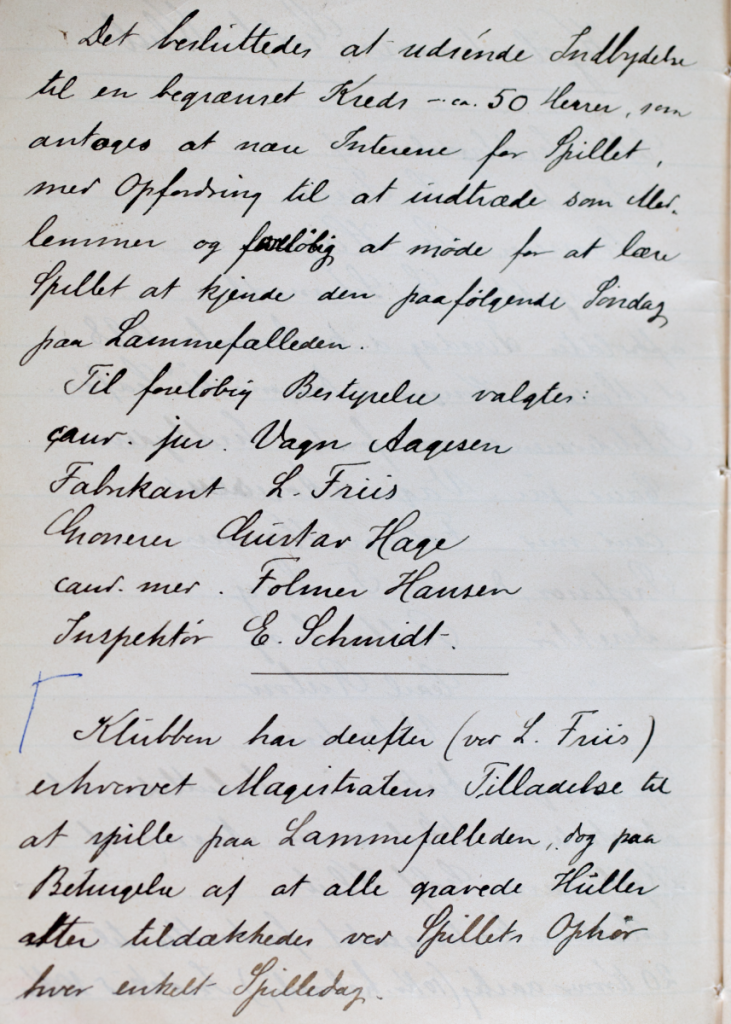
Board minutes for Copenhagen Golf Club 1901
Charles R. Jensen demonstrates golf on Eremitagesletten to a number of guests. Charles recommends that they gather in a club. This becomes the beginning of Scandinavia's first golf club – Copenhagen Golf Club (KGK). The club is formed on December 6, 1898 in Copenhagen.
The KGK archive is lost during the war. One June night in 1944, the clubhouse is bombed by a Schalburgtage group. All material in the clubhouse burns down. A little material outside the clubhouse is saved, including a board minutes.
The board minutes state:
“It was decided to send out an invitation to a limited circle – approximately 50 gentlemen who are assumed to be interested in the game, with an invitation to become members and to meet to learn about the game the following Sunday at Lammefælleden.
The following were elected as provisional board members:
Vagn Aagesen, cand. jur.
Manufacturer L. Friis
Wholesaler Gustav Hage
Master's degree with Folmer Hansen
Inspector E. Schmidt
The club has then (through L. Friis) acquired the Magistrate's permission to play at Lammefælleden, however on condition that all dug holes are covered again at the end of the game each individual game day.
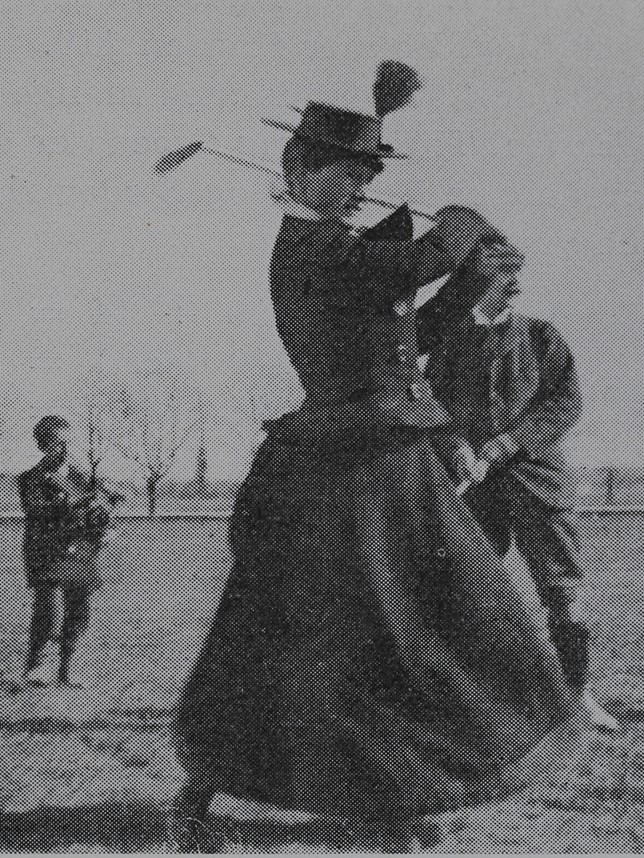
Ingeborg Scavenius wins Denmark's first golf match in 1899
The newspaper Dagens Nyheder writes on Monday, October 10, 1898, about how golf is played: "Golf is played by 2 or more people, each with his own ball - a white ball the size of a small hen's egg. The players also use clubs that have a rather thin cane shaft and end in a bent vertically grooved plate, made of iron or wood, and of different shapes, depending on whether the ball is to be scraped out of a hole or hit from a free spot, whether it is to be hit long or short, etc. An ordinary player can make do with 3 clubs."
The first golf match in Denmark is held by KGK. It is played on Sunday, April 23, 1999, on a course at Lammefælleden. The course has 8 holes and is played through twice. The ladies also participate. Number one is Ingeborg Aagesen, with a total score of 109 strokes. That is approximately 7 strokes per hole. A lady wins the first Danish golf match.
Later that year, matches are played out on Eremitagesletten. The first match on Eremitagesletten is played on an 18-hole course. However, the course is soon changed to a nine-hole course.
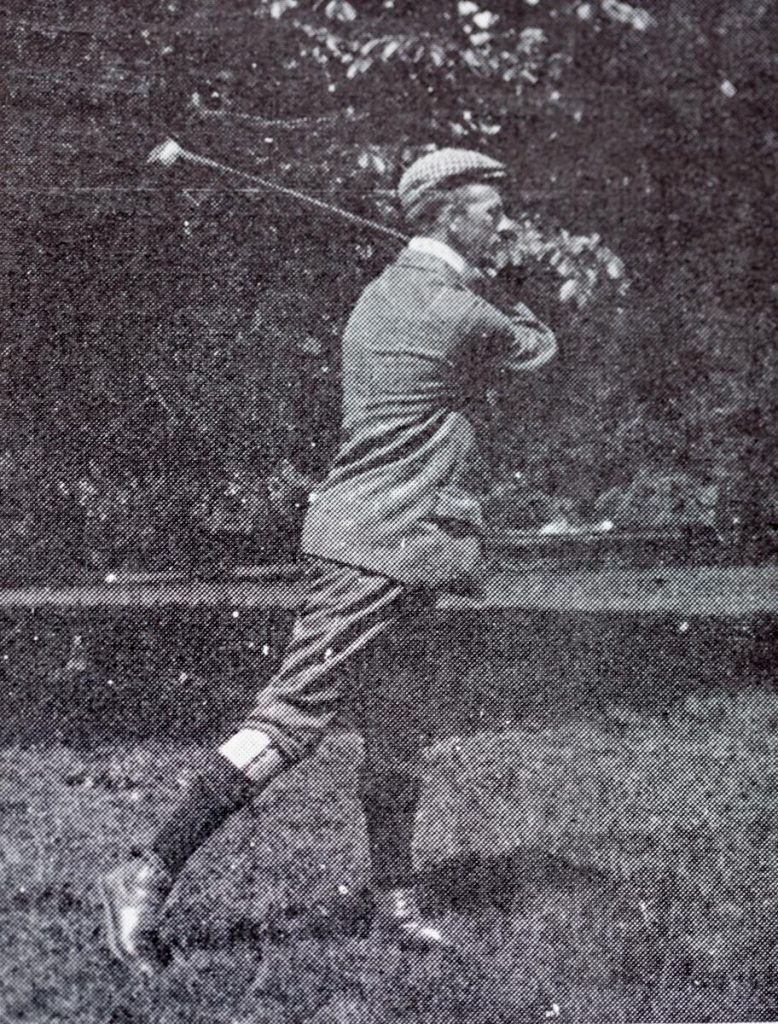
Charles R. Jensen demonstrates golf swings on Eremitagesletten 1898
The newspaper "Dagens Nyheder" writes in an article on Monday, October 10, 1898, among other things, the following:
“The man's name is Jensen, he is Danish by birth, expatriated to America, where he learned the game very quickly and trained as a Professional, i.e. Teacher at the Golf Clubs in New York.
Mr. Jensen showed a small group of sportsmen out on the Hermitage Plain how to hit a golf ball. And he did it really nicely. With a quick, agile movement of the wrist, he alternately made the ball fly very considerable distances and slowly sneak down into its hole, and showed how finely and accurately the game can be played.
With regard to playgrounds in the city's vicinity, he believes that Eremitagesletten is the best for now. The commons could probably be used, but as long as the game is new, there won't be enough spectators who would "play along."
He speaks with great skepticism about the future of the game in this country, knowing full well how long it takes before any new sport gains traction. In addition, he intended to stay at home for the time being, especially if he could get students or become a club golf instructor.
So, if anyone wants to learn, now is the time. Henry”
KGK subsequently notes in its board minutes:
"The club has also hired Mr. Charles R. Jensen, who during a several-year stay in America has trained in the game and has, among other things, served as a professional teacher at several clubs, to arrange the playing field and provide instruction in the game. According to the agreement, he must, for a fee of 25 kroner per month, ensure that the course is laid out (holes laid) every Sunday, and must be active…."
The playing field, which is called the pitch, must be large. The holes are dug either in a circle or in a row. Each hole is 5 inches in diameter and 5 inches deep. The distance between the holes is about 400 meters.
Charles R. Jensen becomes Copenhagen Golf Club's first coach and head greenkeeper.
Denmark's first 18-hole golf course
The original drawing of the golf course, showing the course's general layout as it was completed in 1928.
The first playing course is built in Fælledparken in Copenhagen in 1898. It is not a real golf course. It is called a playing course. The course has eight holes and is used for a few months. Every Sunday the same method. You dig out eight holes, and after the game the eight holes are covered over again.
In the autumn of 1898, interest in Eremitagesletten began. For several reasons. The open, gently undulating landscape on Eremitagesletten is suitable for golf. In addition, the grass turf on Eremitagesletten is unique. The king is the reason. He moves the last Stokkerup farmers away in 1670. After that, the grass carpet spreads. Only disturbed by grazing deer and riders on horseback. The deer prevent Eremitagesletten from turning into forest, as they eat the young beech shoots.
In 1899, KGK therefore asked Dyrehaven for permission to play golf on Eremitagesletten. They received word from the forestry department that everyone had access to the plain. This was the start of the first golf course on Eremitagesletten in 1899. The golf course was located in a triangular area: between Eremitageslottet, Hjortekærvej and the road to Fortunen. The club regularly changed the course of the golf courses.
The story of Denmark's first real 18-hole golf course begins in the 1920s. KGK lacks a real 18-hole golf course. Chairman Frederik Hegel proposes building a real 18-hole golf course north of Hjortekærvejen. The area on the northern side of Hjortekærvejen is better suited for a golf course. A more undulating landscape with fewer bumps.
Denmark's first 18-hole golf course was inaugurated on May 4, 1928 on Eremitagesletten.
The Open Course Design
KGK wants a course in the classic English style, and contacts a well-known English course architect. The course architect arrives from England in 1926 and designs the course in 14 days. Two years later, Denmark's first 18-hole golf course is ready. The course has narrow fairways, thick rough and firm greens. A style known from The Open Circle golf courses in Great Britain.
The Open design is enhanced during a major restoration of KGK's course. In 2008, KGK contacted Scottish course architect Tom Mackenzie, from the firm Mackenzie & Ebert. The firm is working on seven out of the ten Open Circle courses. Tom is both designing and carrying out the restoration of KGK's golf course on Eremitagesletten. The crew and machinery are the same as Tom uses on The Open courses in Great Britain. The restoration will take place over the two winters of 2008/2009 and 2009/2010.
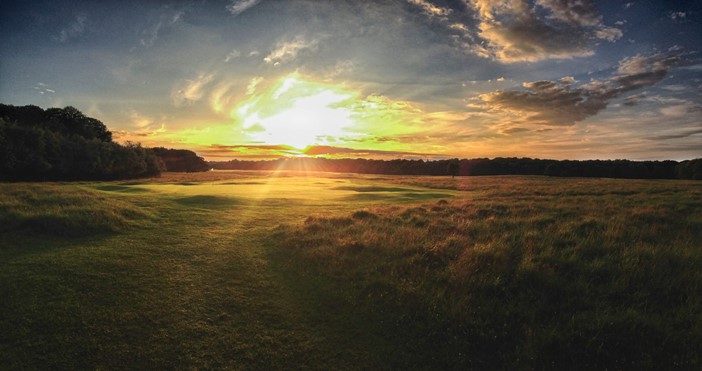
Five-time Open winner Peter Thomson plays at Eremitagesletten
In the years 1946-1973, Copenhagen Golf Club held a tournament for professionals – Copenhagen Cup.
Famous foreign professional golfers come and play the Copenhagen Cup. They use the tournament as a warm-up for playing The Open later in the summer. The similarity between the golf course at Eremitagesletten and The Open courses gives the same playing style. The Copenhagen Cup is therefore a good warm-up for The Open.
Peter William Thomson is the greatest of these professional golfers. Thomson was born on the outskirts of Melbourne, Australia, in 1929. He won three consecutive Majors in the 20th century. The only golfer ever to do so. The three victories were in 1954, 1955 and 1956. He won The Open twice more in 1958 and 1965. In 1965 he defeated Jack Nicklaus and Arnold Palmer. Thomson qualified for The Open for the last time at the age of 49.
Thomson won ten national championships in his career. He played on the PGA Tour from 1953 to 1954 and again in 1956. He won the Texas International Open in 1956. Thomson also had a successful senior career. He won nine times on the Senior PGA Tour in the United States and finished at the top of the money list. He was inducted into The World Golf Hall of Fame in 1988.
Peter Thomson dies in 2018 at the age of 88, leaving behind four children.
